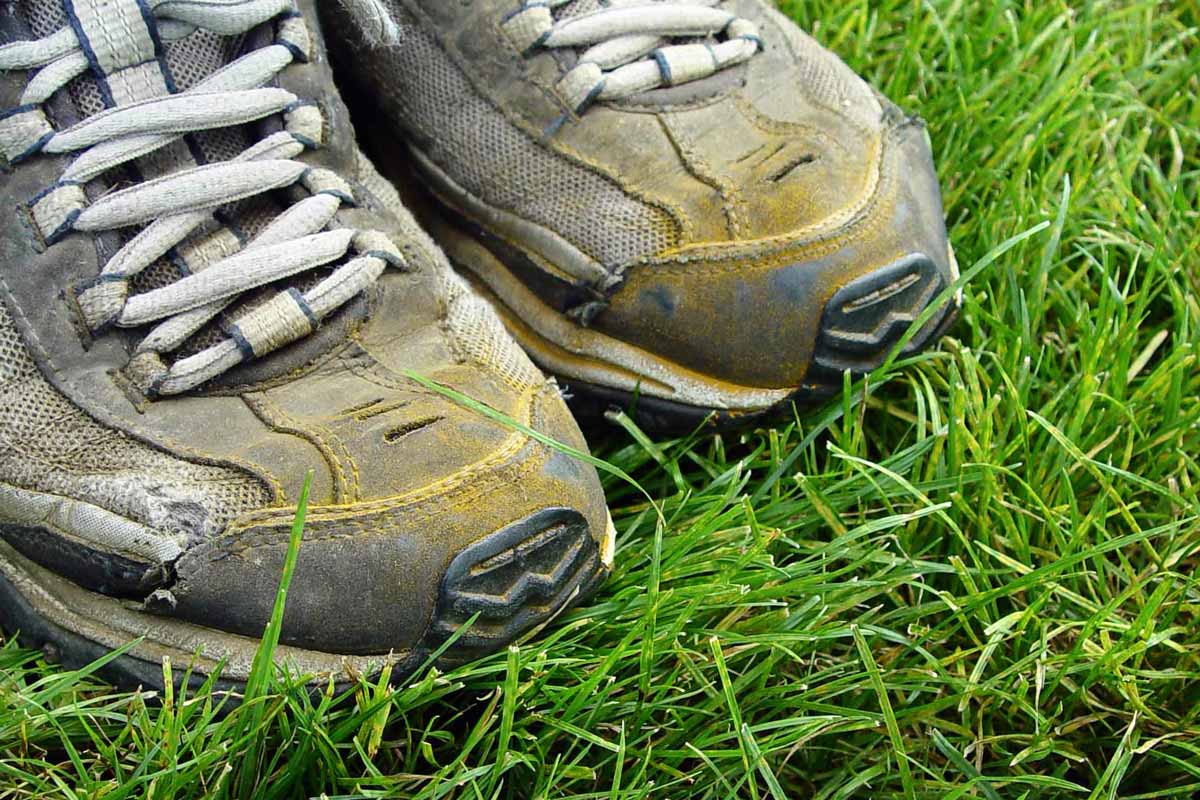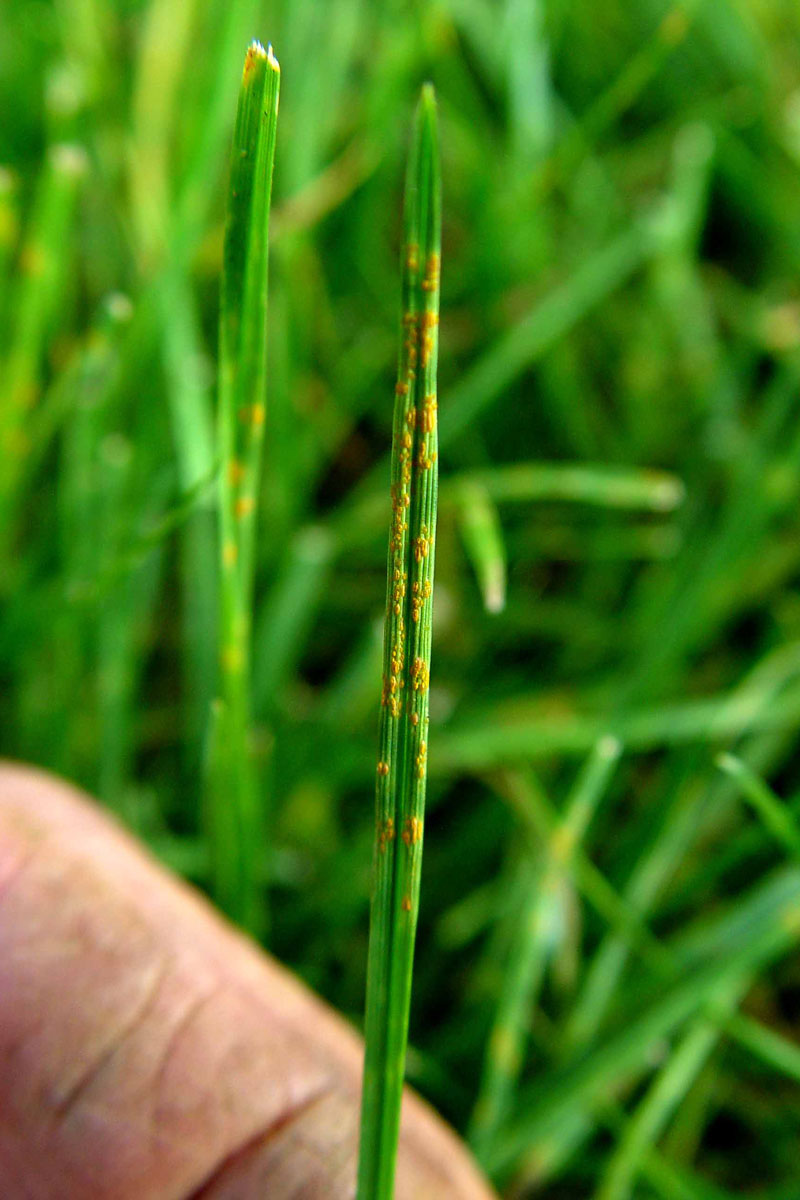Summer Lawn Care Checklist
Here’s a to-do list to keep your lawn looking good throughout the summer.

The powdery spores from lawn rust disease often coat shoes, giving rise to the disease’s nickname of “orange-shoe disease.” George Weigel
Have you ever walked across your lawn and noticed that your shoes were coated with some sort of powdery yellow-orange substance. You might have wondered: did somebody spray something? Is it pollen or something dropping out of the air? Maybe bugs? But the answer is none of the above. The mystery is a case of a lawn disease known as rust, and the powdery material is the spores of a fungus that’s causing the disease.
The disease is harmless to people and pets, and it seldom seriously damages lawns. However, it is a nuisance when you track the yellow-orange spores into the house, and it is a lawn stress that can piggyback on other problems to thin a lawn.

The powdery spores emerge from fungal flecks on the grass blades. George Weigel
Lawn rust is a fairly common lawn disease that typically springs up in mid to late summer, especially when days are warm and humid, nights are cool and dew-producing, and frequent quick-hit showers keep the grass blades damp.
Lawns that are under-fertilized or otherwise stressed are more prone to rust – and other lawn diseases, for that matter.
Lack of nitrogen – the soil nutrient that grass craves the most – is a leading contributor to lawn rust. Other causes include compacted soil, cutting the lawn too short, and too much shade.
When conditions are right and the fungus is present, the disease starts out with little yellow flecks on grass blades. The flecks then mature and open to release the yellow-orange powdery spores that end up on the surface of passing objects, such as shoes. These spores are what have led to the disease’s nickname of “orange-shoe disease.”
Spores can blow into a lawn with the wind or they can transfer in on things like shoes and lawn equipment.
Fortunately, lawn rust usually goes away on its own, and treatment is seldom recommended.
In severe cases or in lawns in which the owner has a low tolerance for even temporary or cosmetic imperfections, several granular lawn fungicides can be used to slow the disease’s progression. However, even fungicides can’t undo the discoloration that’s already happened.